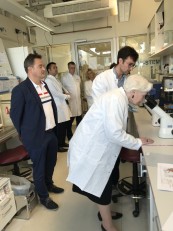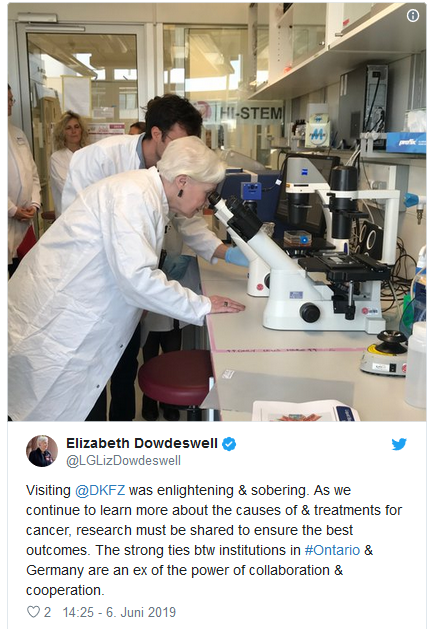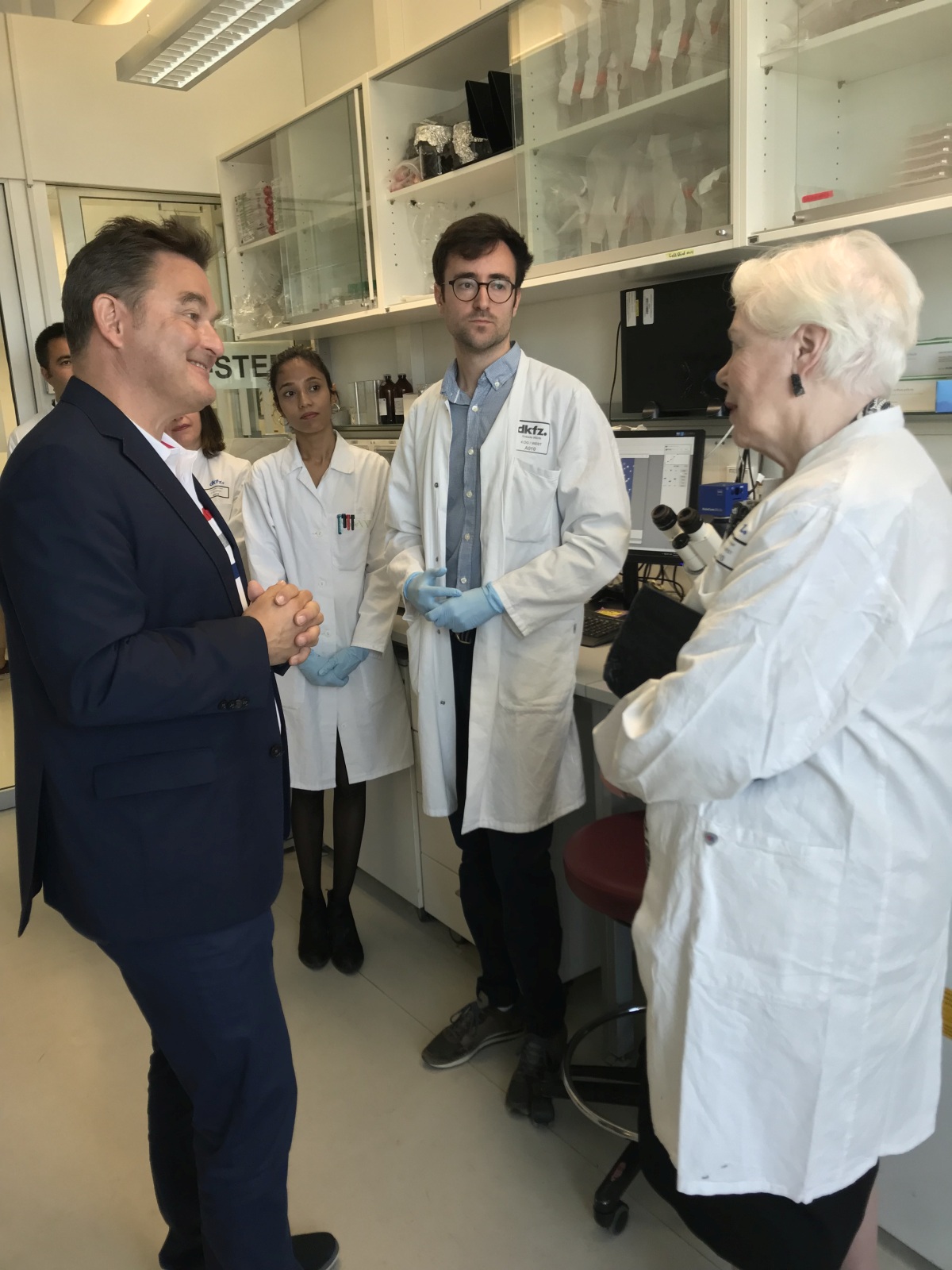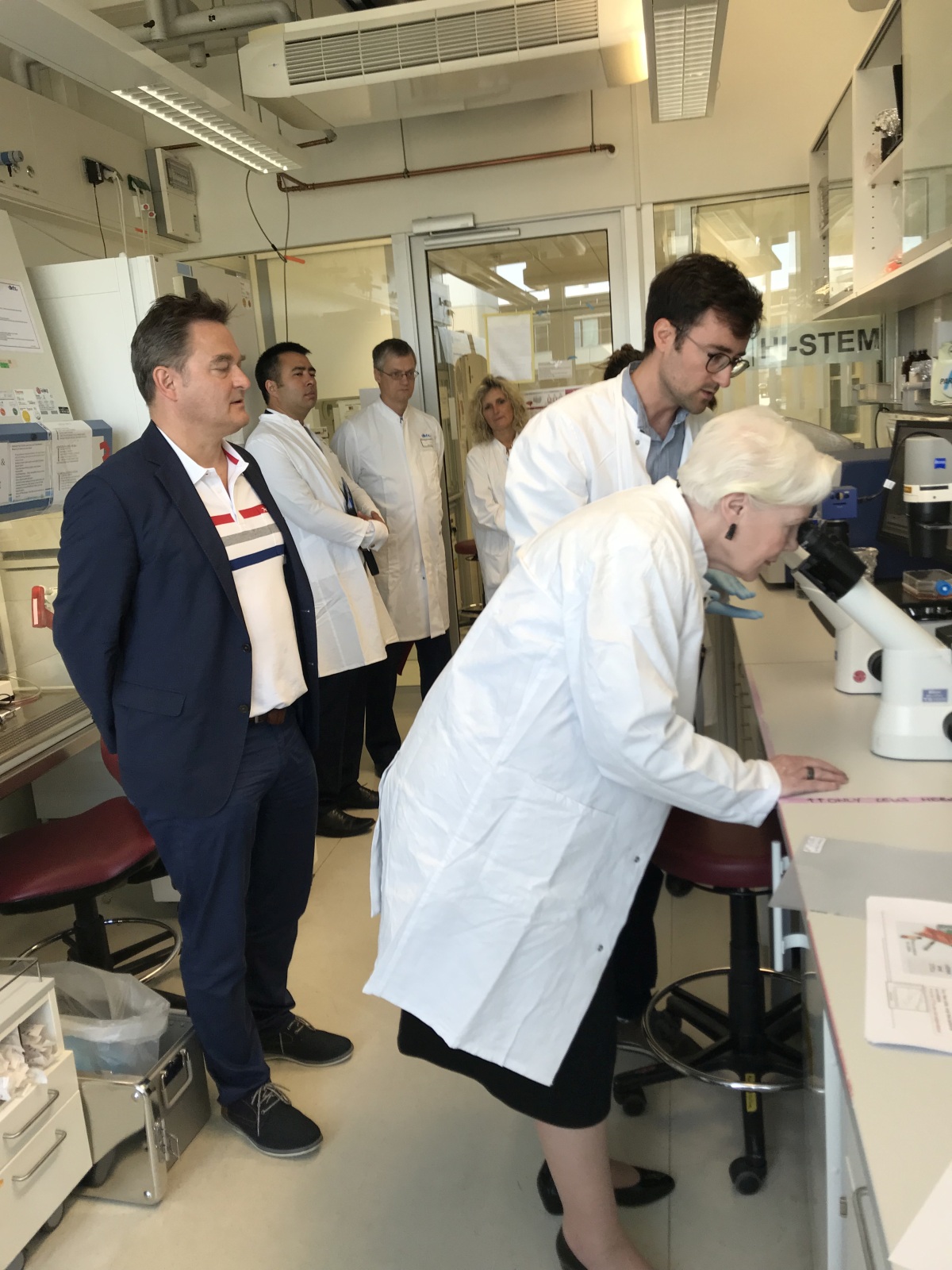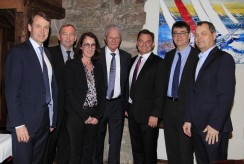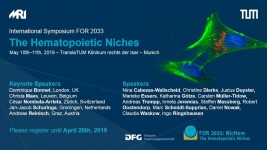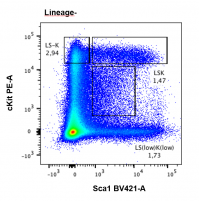
The mammalian blood system is one of the best-researched hierarchical stem cell systems. It is also a main focus of the research in HI-STEM as it is a key for the understanding of the development of hematopoietic stem cells (HSCs) and the catastrophic deregulation of the system during e.g. development of leukemia.
An essential research tool in stem cell research is the ability to differentiate in detail the cell populations that make up the hematopoietic system. Today the method-of-choice is the separation of bone marrow cells via FACS (Fluorescence-Activated Cell Sorting). Here a population of cells is labelled with fluorochrome-conjugated antibodies against specific marker proteins, which are only expressed during certain stages of the hematopoietic development. However, separating the first stages of the system is extremely tricky as only single marker genes change between the stages and only certain combinations of fluorochromes can be applied due to overlaps in their fluorescence characteristics.
To improve and better standardize such approaches, HI-STEM researcher Marcus Eich and Steffen Schmitt (head of the DKFZ’s Core Facility Imaging and Cytometry), developed a new optimized multicolor immunofluorescence panel termed OMIP-059. The panel allows the simultaneous discrimination and quantification of all major populations of the mouse hematopoietic system from the earliest HSCs to the committed progenitor populations with high resolution using only one staining. In addition, it also integrates detection of the internal reporter gene GFP and the CD45.1 and CD45.2 alleles, which are frequently used for various applications.
All experimental details for the panel have now been published in the journal Cytometry: Part A so that the panel can be widely applied in HSC research.
Citation:
Eich, M., Trumpp, A., & Schmitt, S. (2019). OMIP-059: Identification of Mouse Hematopoietic Stem and Progenitor Cells with Simultaneous Detection of CD45.1/2 and Controllable Green Fluorescent Protein Expression by a Single Staining Panel. Cytometry A. doi: 10.1002/cyto.a.23845

